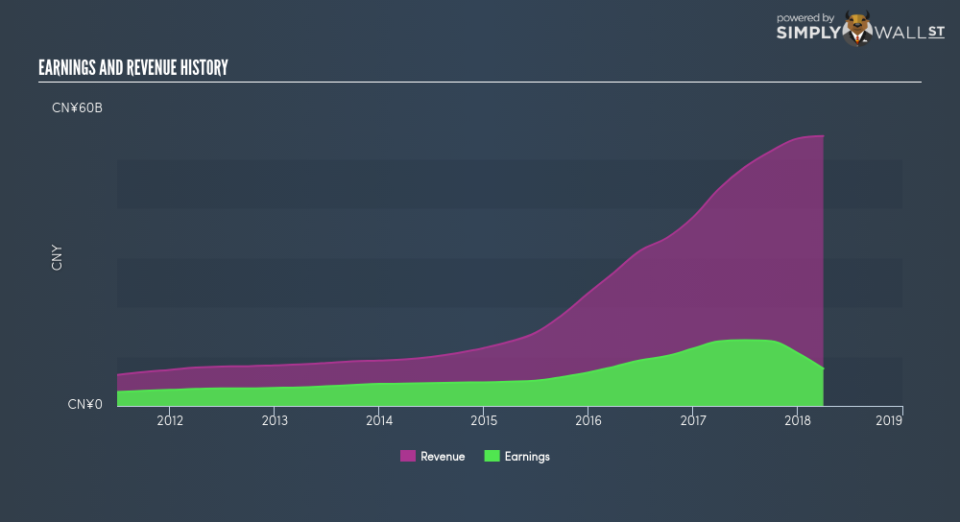NetEase Inc’s (NASDAQ:NTES) Earnings Dropped -42.32%, How Did It Fare Against The Industry?

Examining NetEase Inc’s (NASDAQ:NTES) past track record of performance is an insightful exercise for investors. It allows us to reflect on whether or not the company has met or exceed expectations, which is a great indicator for future performance. Today I will assess NTES’s latest performance announced on 31 March 2018 and compare these figures to its longer term trend and industry movements. View out our latest analysis for NetEase
How Well Did NTES Perform?
NTES’s trailing twelve-month earnings (from 31 March 2018) of US$7.54b has declined by -42.32% compared to the previous year. Furthermore, this one-year growth rate has been lower than its average earnings growth rate over the past 5 years of 22.80%, indicating the rate at which NTES is growing has slowed down. What could be happening here? Let’s examine what’s transpiring with margins and if the entire industry is feeling the heat.
Revenue growth in the last few years, has been positive, however, earnings growth has been lagging behind meaning NetEase has been increasing its expenses by a lot more. This hurts margins and earnings, and is not a sustainable practice. Looking at growth from a sector-level, the US internet industry has been growing its average earnings by double-digit 17.40% in the prior twelve months, and 18.27% over the past five years. This means whatever uplift the industry is enjoying, NetEase has not been able to reap as much as its industry peers.
In terms of returns from investment, NetEase has not invested its equity funds well, leading to a 16.81% return on equity (ROE), below the sensible minimum of 20%. However, its return on assets (ROA) of 8.75% exceeds the US Internet industry of 7.42%, indicating NetEase has used its assets more efficiently. Though, its return on capital (ROC), which also accounts for NetEase’s debt level, has declined over the past 3 years from 22.72% to 19.93%. This correlates with an increase in debt holding, with debt-to-equity ratio rising from 6.01% to 20.93% over the past 5 years.
What does this mean?
NetEase’s track record can be a valuable insight into its earnings performance, but it certainly doesn’t tell the whole story. Companies that are profitable, but have unpredictable earnings, can have many factors impacting its business. You should continue to research NetEase to get a better picture of the stock by looking at:
Future Outlook: What are well-informed industry analysts predicting for NTES’s future growth? Take a look at our free research report of analyst consensus for NTES’s outlook.
Financial Health: Is NTES’s operations financially sustainable? Balance sheets can be hard to analyze, which is why we’ve done it for you. Check out our financial health checks here.
Other High-Performing Stocks: Are there other stocks that provide better prospects with proven track records? Explore our free list of these great stocks here.
NB: Figures in this article are calculated using data from the trailing twelve months from 31 March 2018. This may not be consistent with full year annual report figures.
To help readers see pass the short term volatility of the financial market, we aim to bring you a long-term focused research analysis purely driven by fundamental data. Note that our analysis does not factor in the latest price sensitive company announcements.
The author is an independent contributor and at the time of publication had no position in the stocks mentioned.

 Yahoo Finance
Yahoo Finance 
